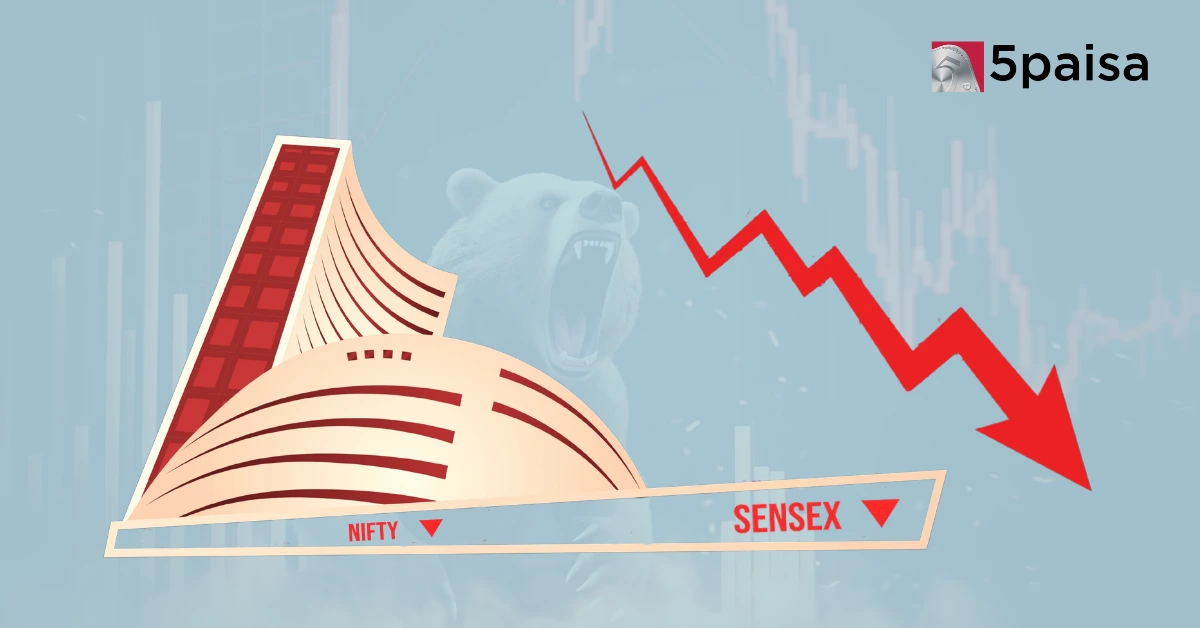iThe current values are delayed, open demat account for live values.
Nifty 50
Nifty 50 Performance
-
Open
25,840.40
-
High
25,940.60
-
Low
25,623.00
-
Prev Close
25,876.85
-
Dividend Yeild
1.31%
-
P/E
22.36
Other Indices
| Indices Name | Price | Price Change (% change) |
|---|---|---|
| India VIX | 10.925 | 0.33 (3.07%) |
| Nifty 10 Yr Benchmark G-Sec | 2611.64 | -0.57 (-0.02%) |
| Nifty 10 Yr Benchmark G-Sec (Clean Price) | 889.9 | -0.36 (-0.04%) |
| Nifty 100 | 26252.95 | -209.65 (-0.79%) |
| Nifty 100 Alpha 30 Index | 17952.3 | -181.2 (-1%) |
Constituent Companies
| Company | Market Cap | Market Price | Volume | Sector |
|---|---|---|---|---|
| Asian Paints Ltd | ₹270925 Cr |
₹2825.5
(0.88%)
|
1280049 | Paints/Varnish |
| Cipla Ltd | ₹118431 Cr |
₹1465.7
(1.09%)
|
1368666 | Pharmaceuticals |
| Eicher Motors Ltd | ₹205921 Cr |
₹7507
(0.93%)
|
457089 | Automobile |
| Nestle India Ltd | ₹250478 Cr |
₹1299.1
(1.04%)
|
1085841 | FMCG |
| Grasim Industries Ltd | ₹188882 Cr |
₹2776.9
(0.36%)
|
529650 | Textiles |
About Nifty 50
Nifty 50 is a benchmark index of the National Stock Exchange of India which consists of top 50 blue chip companies listed on National Stock Exchange of India Ltd. (NSE). The 50 stocks are selected on the basis of liquidity and market capitalization. The Nifty 50 is an important tool for investors looking to invest in India's stock market. Nifty 50 consists of companies belonging to major sectors of the Indian economy and insight into the performance of the Indian economy and provides investors with valuable information about which sectors to invest in. The index is calculated based on free-float market capitalization, which means that only companies with a high float adjusted market cap are selected. Additionally, the Nifty 50 also has a diverse selection of stocks from various sectors such as banking, automotive, energy, and IT.
By tracking the movements of this index, investors can gain insight into the trends and performance of Indian companies on a larger scale. The Nifty 50 also serves as an indicator of investor sentiment, allowing them to gauge how markets may perform in the future.
Nifty 50 Chart

More About Nifty 50
FAQs
How To Invest in Nifty 50 Stocks?
You may invest in Nifty 50 stocks as below:
1.Invest directly in Nifty 50 shares in the same proportion as the index.
2.Investment in an index mutual fund based on Nifty 50. An index fund allows you to invest in a customized portfolio managed by specialists.
What are Nifty 50 stocks?
Nifty 50 stocks represent the 50 most significant and liquid stocks on the National Stock Exchange of India, serving as a benchmark index for Indian equity markets. They span various sectors, reflecting the overall market conditions.
Can you trade shares on Nifty 50?
Yes, you can trade shares on the Nifty 50. This index comprises publicly listed companies, and their shares can be bought and sold on the NSE during trading hours.
In which year was the Nifty 50 Index launched?
The Nifty 50 Index was launched in 1996. It was introduced by the National Stock Exchange of India as a benchmark stock market index representing the weighted average of 50 of the largest Indian companies listed on the exchange.
Can we buy Nifty 50 and sell it tomorrow?
Yes, you can buy Nifty 50 futures or options today and sell them tomorrow. This is a common trading strategy, allowing traders to capitalize on short-term movements in the index.
Latest News

- Jan 09, 2026
As Maharashtra prepares for civic elections on January 15, 2026, traders and investors have been questioning whether India’s major stock exchanges will shut down in observance of the state’s public holiday. With Mumbai, India’s financial capital, at the centre of this civic poll, speculation over market closures intensified over the past week. However, the National Stock Exchange (NSE) and Bombay Stock Exchange (BSE) have clarified the situation for market participants.

- Jan 09, 2026
Steel companies, along with others that are linked to the steel sector, are soon set to tap the capital markets with initial public offers amounting to around ₹4,000 crore in the next 12 to 18 months, as per a Business Standard report. Steel companies' renewed bid for funding is attributed to the recent government action that imposed a three-year safeguard duty on flat steel imports.
Latest Blogs
The NIFTY 50 closed lower by 193.55 points (-0.75%) at 25,683.30, as sustained selling pressure weighed on the index. ASIANPAINT (+1.88%), ONGC (+1.16%), and HCLTECH (+0.94%) were the top gainers, providing limited support, while heavy losses in ADANIENT (-2.59%), NTPC (-2.29%), ADANIPORTS (-2.10%), and ICICIBANK (-2.09%) dragged the index lower.
- Jan 09, 2026

Catch the latest Sensex Nifty updates as the markets swing with changing global trends, domestic cues, and sector performances. Stay informed on how India’s benchmark indices are shaping the trading day, and get insights into how the market may open tomorrow. Whether you're tracking share market news for tomorrow or analysing trends in the stock market tomorrow, we've got you covered—including key cues to watch if you're wondering how will market open tomorrow.
- Jan 09, 2026
